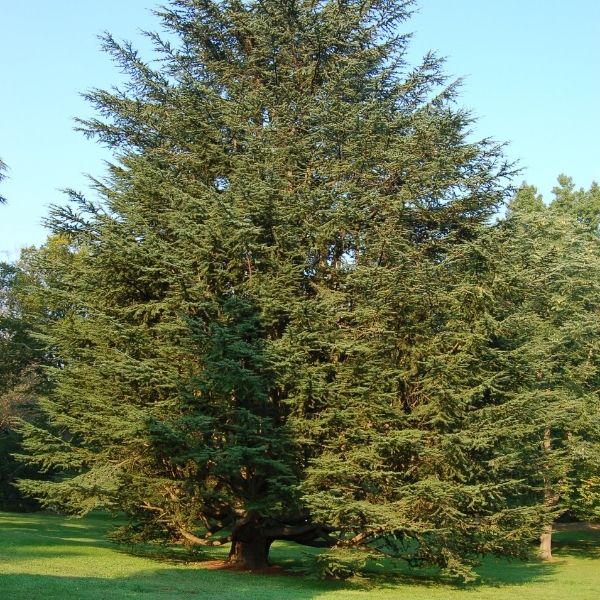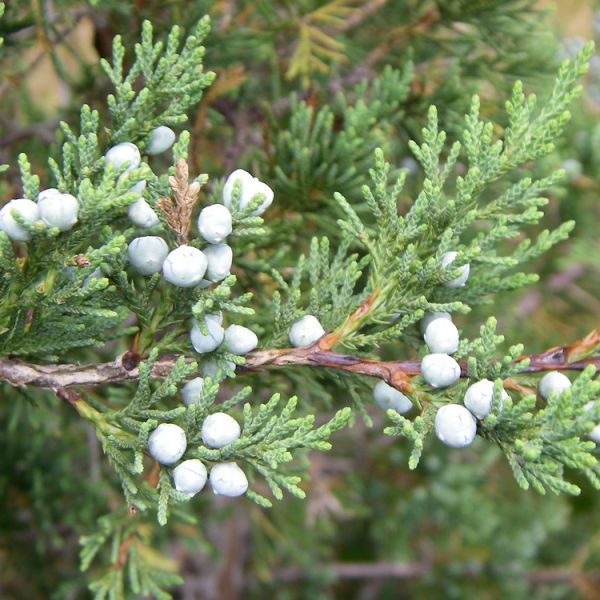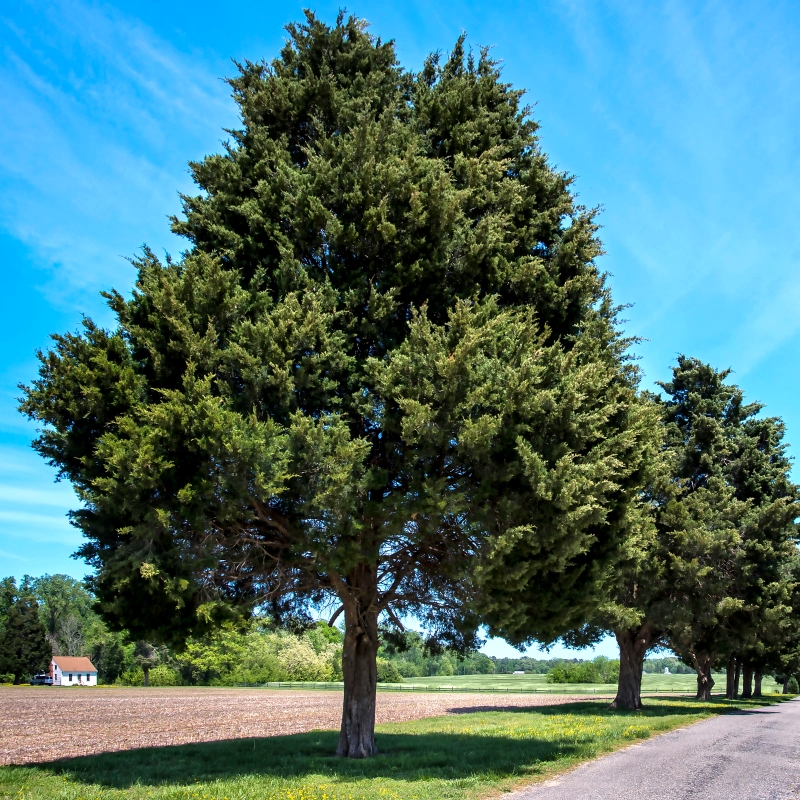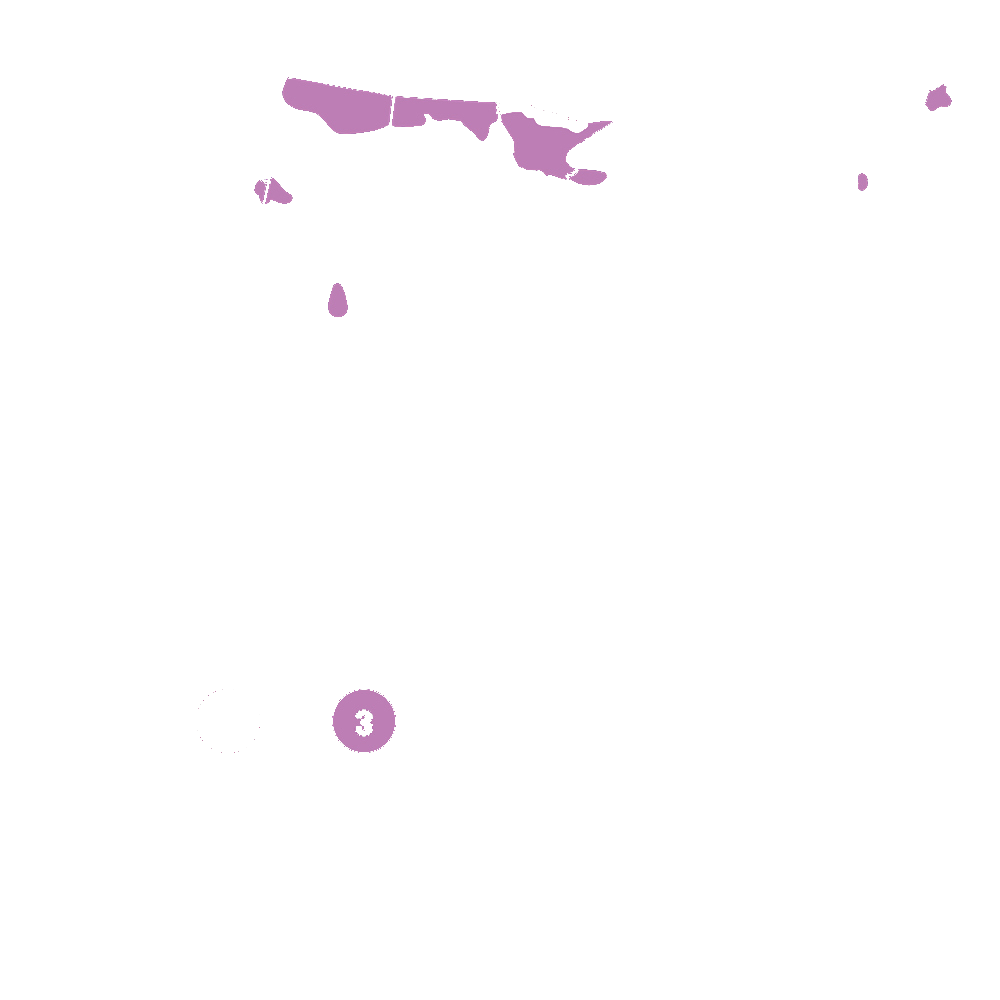



Eastern Red Cedar Tree
Juniperus virginiana
88 reviews
Eastern Red Cedar Tree
Juniperus virginiana
88 reviews
- Trade 3 Gallon
- 1 Gallon
We are sorry, product is currently out of stock due to seasonal availability. Please check the "Related plants available in your area" section below
Not just beautiful - intentionally selected by ShrubHub's 3D landscape design team to fit real-world spaces and maximize yard potential.
Why Eastern Red Cedar Tree?
The Eastern Red Cedar tree (Juniperus virginiana) is a small to medium-sized evergreen tree that is native to eastern North America. It is highly adaptable, drought-tolerant, and can grow in a wide range of soil types. The wood is highly resistant to decay and is often used for fence posts and other outdoor applications. The berries of the tree are also used to make gin. However, the tree can be invasive in some areas and can cause allergic reactions in some individuals.
Sunlight
Eastern Red Cedar trees require full sunlight to grow and thrive. They do not tolerate shade well and need direct sunlight for a significant portion of the day to maintain their health and develop properly.
Watering
Eastern Red Cedar trees have a moderate watering requirement and can tolerate mild drought conditions once established. It is important to provide adequate water during the first few years after planting, ensuring the soil is evenly moist.
Fertilizing
Eastern Red Cedar trees do not require regular fertilization. They are adaptable to various soil conditions and can thrive in poor or rocky soils. Additional fertilization may not be necessary unless the soil is extremely deprived of nutrients.
Delicate, aromatic, and attractive, eastern red cedar (Juniperus virginiana) is a small to medium-sized evergreen tree and a slow-growing conifer that grows up to 30-65 ft. tall and 8-25 ft. wide.
Energized by a burst of colors, eastern red cedars display olive green to yellowish green leaves (that later develop into bronze come the first frost and reddish in winter), dark green foliage, reddish brown bark, and startling blue berry-like cones. This wild riot of colors contributes to putting on a wow-worthy display in any landscape design.
Its needle-like foliage, scale-like leaves, flexible branches, symmetrical pyramid shape, aromatic wood, and narrow crown glamorizes the eastern redcedar even further.
Native to eastern North America, the juniper thrives best in full sun areas, prefers rich, moist, slightly acidic, and well-drained soil, and shows a 12-24” growth rate per year.
Breathing life into a boring, unwelcoming yard calls for a bald statement, and you can’t possibly go wrong with eastern red cedar! Resistant to extreme weather conditions, this easy-to-care-for evergreen tolerates drought, heat, wind, and cold, which makes it a perfect choice for shade and privacy. Moreover, it is a natural barrier against wind and noise pollution.
In addition to its charming beauty, this tree provides wildlife with shelter, food, and habitat. While (luckily) it is deer resistant, its berry-like cones attract cedar waxwings, which is a clever way to add movement and color to your outdoor space.
Looking for ways to transform your outdoor space into a mesmerizing backyard retreat? Bring a valuable piece of nature right into your home by planting an eastern red cedar! Order yours now!
Plant Information:
| Botanical Name: | Juniperus virginiana |
| USDA Zones: | 3 - 9 |
| Water: | Moderate to Low |
| Exposure: | Full Sun |
| Soil Needs: | Widely Adaptable |
| Mature Height: | 40 - 60 feet |
| Mature Spread: | 10 - 20 feet |








Pollination Info
Pollination Info for Eastern Red Cedar Tree (Juniperus virginiana)
The Eastern Red Cedar tree is a dioecious tree, which means it has separate male and female trees. The male trees produce small cones that contain pollen, while the female trees produce larger cones that bear seeds. Pollination occurs when the pollen from the male cones is transported by wind to the female cones.
The Eastern Red Cedar tree is wind-pollinated, so it does not rely on insect pollinators. The male trees produce a large amount of pollen, which is lightweight and easily carried by the wind. The female trees produce larger, sticky cones that trap the pollen and facilitate fertilization.
The pollination period for Eastern Red Cedar trees occurs in late winter to early spring. During this time, the male trees release their pollen, which is carried by the wind to the female trees. The cones on the female trees are receptive to pollen during this window of time.
The Eastern Red Cedar tree is an important plant for wildlife, providing food and habitat for many species. The berries produced by the female trees are a food source for birds and small mammals, while the tree itself provides shelter and nesting sites.
FAQ
Eastern Red Cedar Tree (Juniperus virginiana) FAQ
General Information
- What is an Eastern Red Cedar Tree?
Eastern Red Cedar Tree, also known as Juniperus virginiana, is a species of the Juniperus genus and is native to eastern North America.
- What is the average height of an Eastern Red Cedar Tree?
An Eastern Red Cedar Tree can grow up to 40 feet tall.
- How long can an Eastern Red Cedar Tree live?
Red Cedars can live up to 900 years.
- What is the significance of Eastern Red Cedar Trees?
Eastern Red Cedar Trees have cultural, ecological and economic significance. Cedar oil is extracted from the tree, which has medicinal properties and is used in manufacturing perfumes, soaps, and detergents. The tree also provides habitat and food for various wildlife species and is used for landscaping and erosion control.
Planting and Care
- What are the ideal conditions for planting an Eastern Red Cedar Tree?
Red Cedars prefer well-drained soil, full sun, and moderate temperatures for planting.
- When is the best time to plant an Eastern Red Cedar Tree?
The best time to plant a Red Cedar is in the spring or early fall when the soil temperature is suitable for growth.
- How often should I water the Eastern Red Cedar Tree?
Water the plant deeply once a week, especially during the growing season.
- What is the optimal temperature range for Eastern Red Cedar Trees?
Red Cedars prefer a temperature range of 60-80°F.
- How often should I fertilize my Eastern Red Cedar Tree?
Red Cedars do not require frequent fertilization. Fertilize with a balanced fertilizer during the spring or early summer.
Pruning and Maintenance
- When should I prune my Eastern Red Cedar Tree?
Prune Red Cedars during the dormant season (fall or winter) to shape the tree and remove any damaged or diseased branches.
- How do I prune my Eastern Red Cedar Tree?
Use clean and sharp hand pruners or loppers to make a clean cut. Avoid leaving a stub or tearing the bark. Prune the tree in a natural shape without removing more than 1/3 of the canopy at once.
- How do I maintain my Eastern Red Cedar Tree?
Maintain the tree by watering it deeply, fertilizing it once a year, and pruning it during the dormant season. Check for any signs of disease or pests and take appropriate action.
Disease and Pests
- What are some common diseases affecting Eastern Red Cedar Trees?
Cedar-apple rust, Phomopsis blight, and Cercospora blight are common diseases that affect Red Cedars.
- What are some common pests affecting Eastern Red Cedar Trees?
Bagworms, spider mites, scale insects, and aphids are common pests that affect Red Cedars.
- How do I prevent and treat disease and pests in my Eastern Red Cedar Tree?
The best way to prevent disease and pests is to maintain the tree's health through proper care and maintenance. Use pesticides and fungicides if necessary, and prune off any infected branches to prevent the spread of disease.
Planting & Care
Planting:
- Choose a site with full sun exposure and well-drained soil.
- Dig a hole twice the width of the root ball and deep enough to accommodate it.
- Place the tree in the hole and backfill with soil, packing it firmly around the roots.
- Water thoroughly and add a layer of mulch around the base to help retain moisture.
- Water regularly, especially during the first year of growth.
Care:
- Water regularly, especially during dry periods.
- Prune in late winter or early spring to maintain desired shape and size.
- Fertilize in spring with a balanced fertilizer.
- Watch for signs of cedar-apple rust, a common fungal disease, and remove any infected material promptly.
- Protect from deer browsing with fencing or repellent sprays.
Check Out These Verified Customer Reviews:
Customer Reviews
4.6 out of 5 based on 88 reviews
Thank you! Your review has been submitted.
Beautiful tree, exactly as described.
The Eastern Red Cedar Tree I received is beautiful and healthy. It was well-packaged and arrived on time. The customer service team was helpful and responsive to my inquiries. Overall, a great experience.
Extremely satisfied with my purchase of the Eastern Red Cedar Tree.
Item has been added to your cart.


